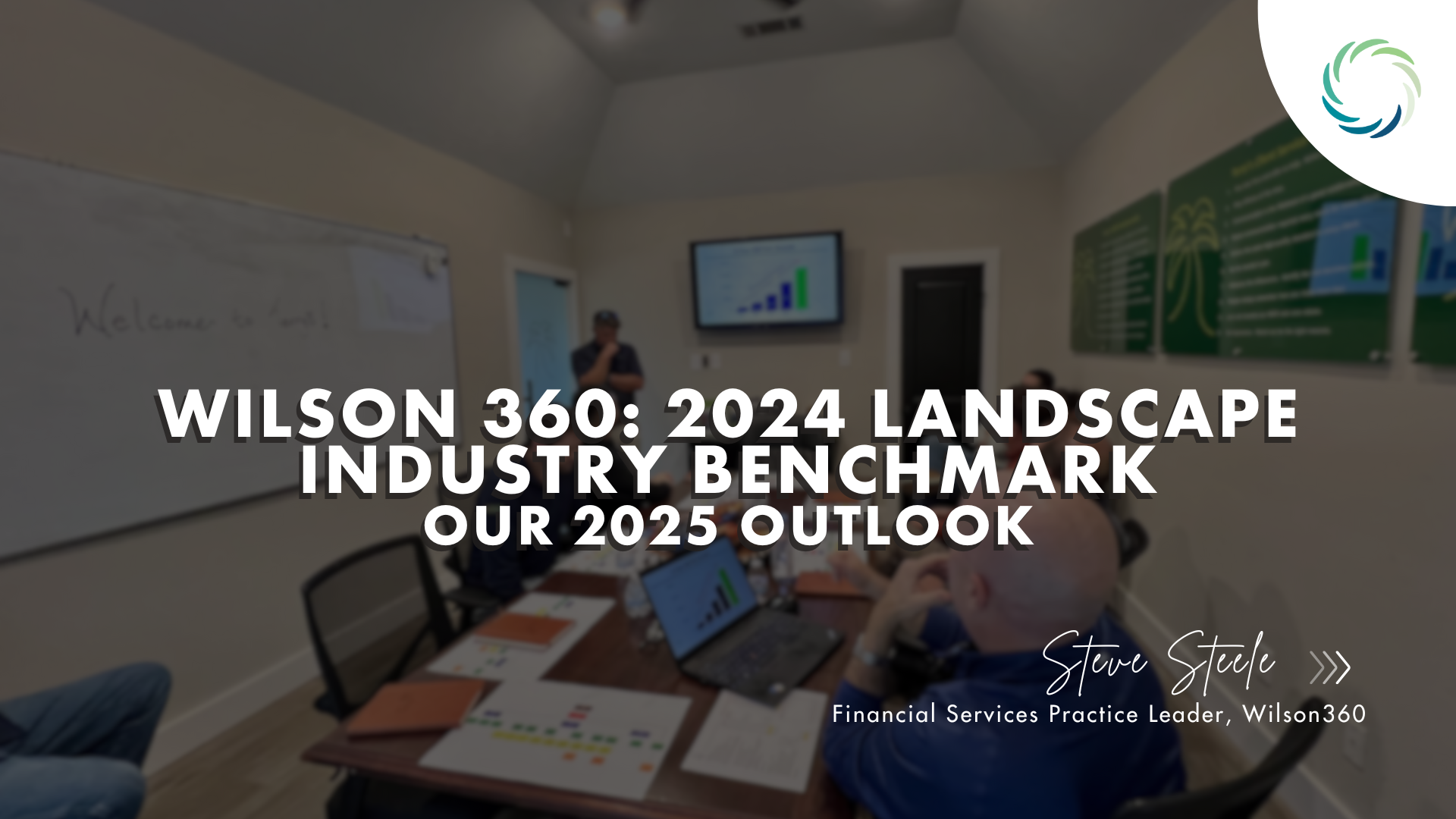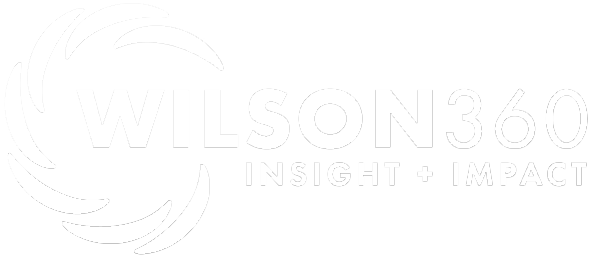
Wilson 360: 2024 landscape industry benchmark
by Steve Steele
Benchmarking season is here!
Annually, a variety of industry partners roll out their annual reports packed with critical insights into the latest business trends, the future industry outlook and key observations that help set clear expectations for the road ahead.
For over 15 years, Wilson 360 has been leading our own annual benchmarking charge, comprised of commercial and residential operators coast to coast ranging from $3 million to $54 million annually. For the first time ever, we are sharing some of our own exclusive insights into the health of the industry based on same-company year-over-year results from 2024. What follows is an exciting glimpse into where the industry stands and where it is heading.
Total Revenue, Expenses and Gross Margin
Revenue. Total Net Revenue (Gross Revenue – Subcontract costs) increased 8%, a slight reduction versus 2023’s gains of 9%. The industry continued to benefit from a strong economy with property managers focused on keeping properties looking good and homeowners’ continued investment into their biggest asset.
Cost of Goods Sold (COGS). COGS, costs directly related to job-level field production activities, was 47% of Net Revenue, down 4% versus 2023. Green industry companies continued emphasizing more efficient production and benefited from stabilizing wages and material costs.
Direct Labor. Direct Labor is the biggest controllable variable cost for most companies. Overall, burdened Direct Labor costs were comparable to 2023, comprising 31% of Net Revenue. Cost reductions resulting from greater efficiency directly increase Net Operating Income, assuming overhead costs remain consistent as a percentage of Net Revenue.
Gross Margin. Gross Margin (Net Revenue – COGS), increased 4% compared to 2023, to 53% of Net Revenue. This critical number is what remains to pay for all overheads and net operating income.
Net Operating Income. Net Operating Income, income derived specifically from a company’s core business operations before other income and expense items, increased 31% over 2023, totaling 7% of Net Revenue. Gains resulted from better operating efficiency leading to reduced COGS and better overhead economies of scale related to revenue growth.
Maintenance. Maintenance continued to show robust annual growth. This key division grew 19% over 2023, comprising 43% of Net Revenue. Pricing stabilized, though companies more than ever realized the need to keep up with their own increased costs of production, becoming more strategic about how price increases are levelled on their client base. Burdened Direct Labor percentage of Net Revenue declined 7% versus 2023, totaling 43% of Net Revenue, while Gross Margin improved 3% over 2023, finishing at 51% of Net Revenue.
Enhancement. Generally, enhancement sales started slowly in 2024, in some cases until the latter part of the year, which helps explain the lackluster 2% growth results in this area. Burdened Direct Labor percentage of Net Revenue fell 5% compared to 2023, finishing at 22% of Net Revenue, while Gross Margin improved 2% versus 2023, at 65% of Net Revenue.
Enhancement Revenue Percentage of Maintenance Revenue. Sometimes called Enhancement Penetration Percentage, it is a critical measure of how effectively property upgrades are provided to a captive maintenance client base. Enhancement proposals are less price sensitive and when completed, result in higher satisfaction with the overall appearance of the property, leading to potentially higher maintenance retention percentages.
Enhancement Revenue was 30% of Maintenance Revenue, which is level compared to 2023. This indicates some possible softness in consumer sentiment during an election year full of domestic and geopolitical unrest.
2025 Outlook. Concerning headwinds, a by-product of U.S. economic instability related to tariffs and federal job reduction impacts, are causing uncertainty related to non-core maintenance services, primarily enhancement and other related elective services, at the midway point of Q2. Assessing potential budget impacts will take time for property owners and service providers. Lagging effects of this uncertainty may continue through mid-Q3, though by late Q3, the outlook should stabilize, allowing a clearer indication of how 2025 will finish and highlighting key economic considerations heading into 2026.
Reprinted with permission. GIE Media. Lawn & Landscape May 2025 (c)

